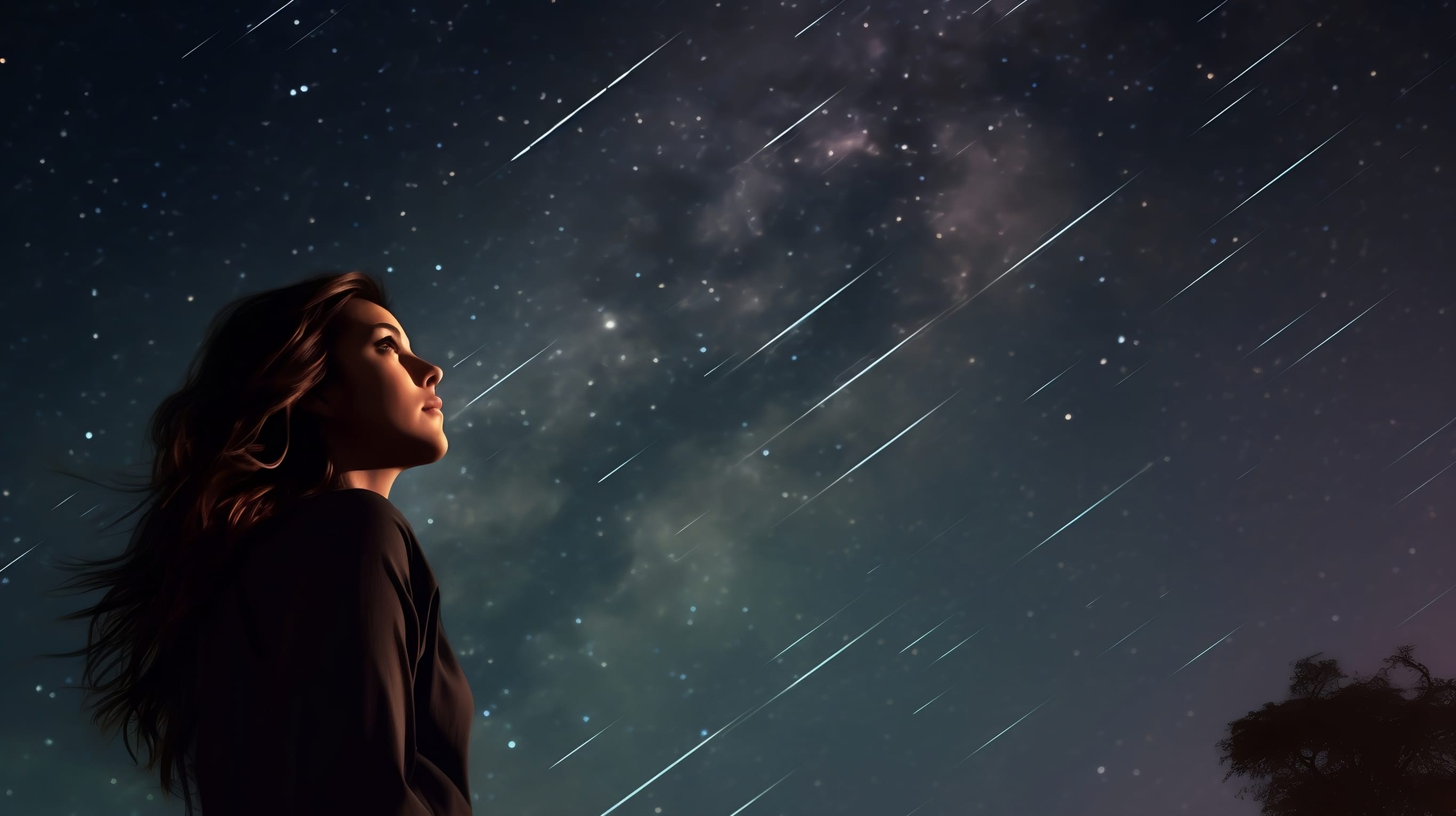Eta Aquariids 2026: May’s Best Meteor Shower?
One of the year’s top meteor streams for the Southern Hemisphere, the Eta Aquariids, will light up the skies on May 6, 2026. However, the show will be spoiled by the waning gibbous Moon. Read on to learn how you can still try to catch some meteors — and use the Sky Tonight app to find the best viewing time for your location.
Contents
- Eta Aquariids 2026: When and where to see
- What causes the Eta Aquariids?
- Eta Aquariids 2026: Bottom line
Eta Aquariids 2026: When and where to see
- Active: April 19 – May 28
- Peak of activity: May 6
- Meteors/hour: 50 (fewer visible due to moonlight)
- Moon illumination: 83%
- Radiant location: Constellation Aquarius
- Parent body: Halley’s Comet (1P/Halley)
- Best visible from: Southern Hemisphere
- Description: The Eta Aquariids are famous for their fast meteors and persistent glowing trails. Under ideal viewing conditions, this meteor shower can produce up to 50 shooting stars per hour.
Eta Aquariids 2026: Visibility forecast
In 2026, the Eta Aquariids will reach their maximum just five days after the Full Moon. The bright Moon will be above the horizon for most of the night — that means viewing conditions will be rather unfavorable, especially for fainter meteors. To improve your chances, try to position yourself so that the Moon is blocked by a tree or building.
Where can I see the Eta Aquariids?

The Eta Aquariids favor Southern Hemisphere observers. They can also be seen up to about 40°N latitude, but the hourly rate there will drop to around 10 meteors per hour. Taking into account interference from the Moon, the shower will be very difficult to observe from the Northern Hemisphere in 2026.
The radiant, located in the constellation Aquarius near the star Eta Aquarii, rises after midnight and reaches its highest point just before dawn. You can easily find its position using the Sky Tonight app — search “Eta Aquariids,” tap the target icon, and follow the arrow on your screen. Remember that you don’t have to look directly at the radiant to see meteors, but the higher the radiant is, the more shooting stars you’re likely to see.
For more observing tips, explore our meteor shower infographic.

What causes the Eta Aquariids?
Meteor showers can be caused by either comets or asteroids. The Eta Aquariids originate from debris left by Halley’s Comet, the same comet that produces the Orionids in October. When Earth crosses the comet’s dust trail each May, tiny particles hit our atmosphere at around 65 km/s (40.3 miles), burning up in bright streaks.
Halley’s Comet won’t return to our skies until 2061, but plenty of other comets will visit long before then. Curious which ones are coming next? Explore our guide to upcoming comets!
Eta Aquariids 2026: Bottom line
In 2026, the Eta Aquariid meteor shower will peak on May 6, potentially producing up to 50 meteors per hour in ideal conditions. However, the waning gibbous Moon will wash out many of the meteors. Observers in the Southern Hemisphere might still hope to catch a few bright fireballs streaking across the pre-dawn sky.
Use Sky Tonight to set a reminder so you don’t miss the Eta Aquariids’ peak. If you want to test your meteor-watching skills, take our short quiz about shooting stars.

